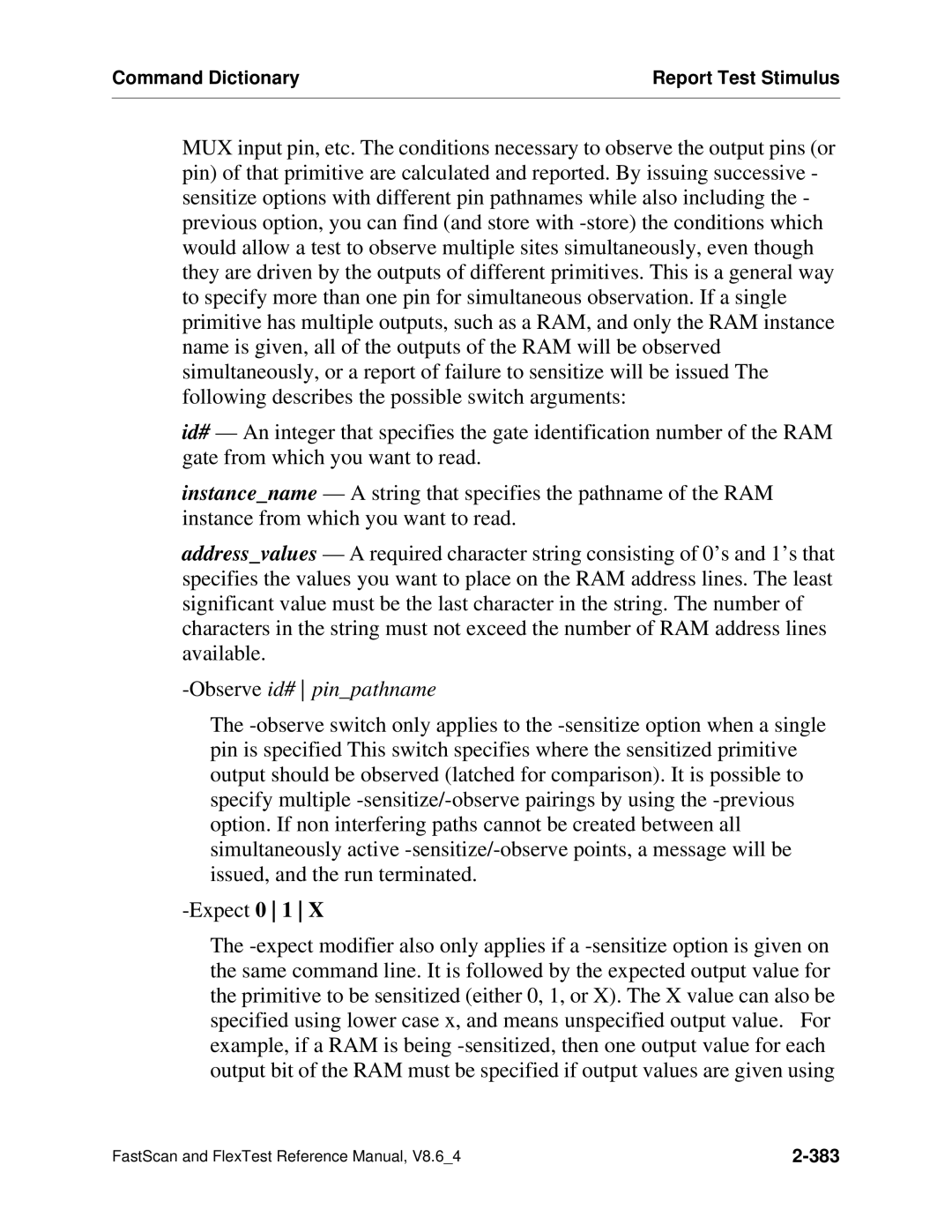Command Dictionary | Report Test Stimulus |
| |
MUX input pin, etc. The conditions necessary to observe the output pins (or pin) of that primitive are calculated and reported. By issuing successive - sensitize options with different pin pathnames while also including the - previous option, you can find (and store with -store) the conditions which would allow a test to observe multiple sites simultaneously, even though they are driven by the outputs of different primitives. This is a general way to specify more than one pin for simultaneous observation. If a single primitive has multiple outputs, such as a RAM, and only the RAM instance name is given, all of the outputs of the RAM will be observed simultaneously, or a report of failure to sensitize will be issued The following describes the possible switch arguments:
id# — An integer that specifies the gate identification number of the RAM gate from which you want to read.
instance_name — A string that specifies the pathname of the RAM instance from which you want to read.
address_values — A required character string consisting of 0’s and 1’s that specifies the values you want to place on the RAM address lines. The least significant value must be the last character in the string. The number of characters in the string must not exceed the number of RAM address lines available.
-Observeid# pin_pathname
The -observe switch only applies to the -sensitize option when a single pin is specified This switch specifies where the sensitized primitive output should be observed (latched for comparison). It is possible to specify multiple -sensitize/-observe pairings by using the -previous option. If non interfering paths cannot be created between all simultaneously active -sensitize/-observe points, a message will be issued, and the run terminated.
-Expect0 1 X
The -expect modifier also only applies if a -sensitize option is given on the same command line. It is followed by the expected output value for the primitive to be sensitized (either 0, 1, or X). The X value can also be specified using lower case x, and means unspecified output value. For example, if a RAM is being -sensitized, then one output value for each output bit of the RAM must be specified if output values are given using
